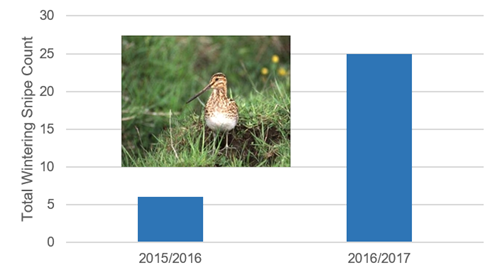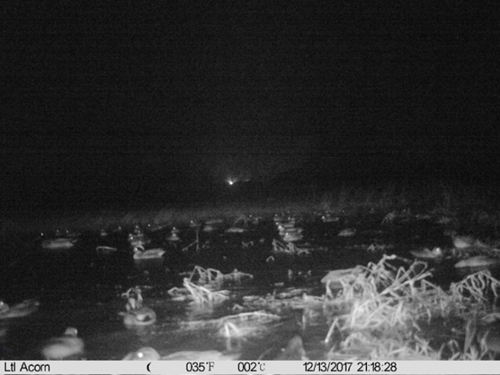Although the focus of our project and habitat works is principally the improvement of habitats for breeding waders. However, our work has the potential to positively influence the populations of wintering waterfowl and waders utilising the Avon Valley. Take a scrape for example, these are utilised by breeding lapwing in the spring and summer then by overwintering snipe in the colder months.
The Avon Valley floodplain holds both SPA and SSSI designations for wintering wildfowl and waders and given their importance it crucial that we document any affects our management may have. As a result, since 2015, the LIFE Waders for Real team have been undertaking winter bird surveys, focused on waterfowl and waders.
During this time, we aim to visit each of our study sites at least once every month over a three-month winter period. This is timing is focused on the peak counts of wintering birds. Commonly recorded wintering waders include black-tailed godwit, curlew, common snipe, jack snipe, lapwing and green sandpiper alongside wintering waterfowl such as gadwall, wigeon and teal.
A wintering species which LIFE Waders for Real is particularly interested in is Common Snipe. This species dramatically declined as a lowland breeding bird in the UK, since the 1940’s and part of the LIFE Waders for Real project aims to create habitats for this species to return as a breeder. However, until then the valley continues to hold important numbers of migrant snipe which overwinter in the wet meadows and our work has the potential to support this population.

Our surveys so far, have shown increases in the snipe counted on our hotspot sites, such as on one site above where an increase from an average of 6 to 25 snipe were observed during our winter bird surveys. This is fantastic news and a trend we hope continues until the end of the project.
Additional, ad-hoc monitoring is conducted at specific sites using camera traps. These camera traps have shown that many of the in-field wet features created by the project are used as day-time feeding and night time roost sites for wintering waterfowl, often teal and wigeon.
